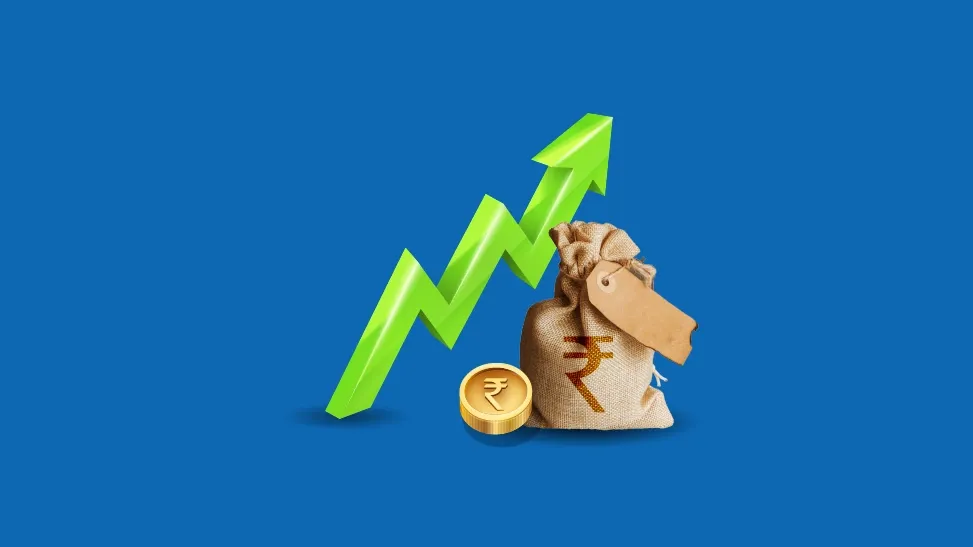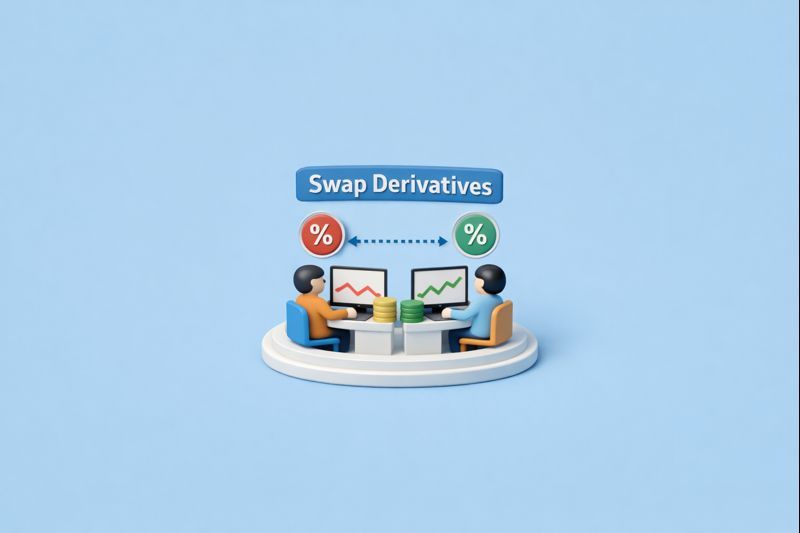What is Nifty 50

- Published Date: October 16, 2024
- Updated Date: October 13, 2025
- By Team Choice
Anyone interested in the stock market must have heard about Nifty 50. Almost every day, newspapers and TV channels talk about this index and its correlation to the country's economic growth. The total traded value of the Nifty 50 index in the last six months as of March 2024 is 28% of the traded value of all NSE stocks. It is an indicator of the Indian stock market performance, and every investor must know what Nifty 50 is before choosing an investment avenue. If you are looking for investment opportunities that track and simulate the stock market performance, you must know how to invest in Nifty 50.
Nifty 50 Meaning
Nifty 50 index is a broad-based insect that contains 50 Blue chip large and liquid Funds listed on the National Stock Exchange of India (NSE). The Nifty 50 index came to be known as the stock of the nation, providing insights into the Indian capital market, and it is one of the most widely used benchmark indexes for exchange-traded funds.
Primarily, the Nifty 50 is used for benchmarking fund portfolios. It is especially useful for index funds and index-based derivatives. It is ideal for derivative trading.
What is Nifty50?
The Nifty 50 index has undergone several changes since its inception on November 3, 1995. The index constituents were weighted based on their full market capitalisation. However, after 2009, the index computation changed to a free float methodology.
Currently, the Nifty 50 index offers exposure to 13 sectors. In the past 25 years, from 1999 to 2021, the Nifty 50 total return index has provided annualised returns of 14.2% CAGR. In fact, the returns have surpassed more than 40% in 4 calendar years. For a 10-year investment horizon, the Nifty 50 TR index has delivered over 15% per annum for 47.9% of the time.
Investors use this index to track market trends, compare investment performance, and estimate the economy's overall health. Stringent eligibility criteria such as market capitalisation, liquidity, trading frequency, sector representation, and more are used to include the stocks in the index. The Nifty is frequently reviewed and adjusted to reflect the changing market dynamics.
Some of the reasons why the Nifty index is crucial for Indian investors are:
- You can check your portfolio health by comparing its performance to the Nifty index performance to identify investment areas that must be improved.
- You can understand the market trends from Nifty and identify which sectors are performing well to base your investment decision on.
- The movement of nifty is a strong indication of the market Trends. An upward movement suggests a strong market, and you should be cautious if you want to invest while the Nifty is falling.
How Nifty50 is Calculated?
The Nifty50 index is calculated using the free-float market capitalisation methodology. This approach ensures that the index reflects the market value of the shares available for trading.
Free-float market capitalisation accounts for the market value of shares available for public trading. It excludes shares held by insiders, promoters, and government entities not actively traded.
The formula used to calculate the Nifty50 index is:
Nifty50 Index= Current market capitalisation of the index base market capitalisation X Base index value
- The current market capitalisation of the Index is the sum of the market capitalisations of all 50 constituent companies.
- Base market capitalisation is the market capitalisation of the index at its base date.
- Base index value is the value of the index at the base date (usually set at 1000).
The index value is updated in real time during trading hours. Adjustments are made regularly to ensure the index accurately reflects market conditions. Companies may be added or removed based on market capitalisation or liquidity changes.
The Nifty50 is rebalanced periodically, usually every six months, to ensure it remains representative of the market. Companies that no longer meet the eligibility criteria may be replaced with others during rebalancing.
Multiple Ways to Invest in Nifty50
Nifty 50 has consistently outperformed several global indices in the past 4 years. Here is a comparison overview:
Anyone can profit from this growth, and you don’t need a large sum to get started. You can invest in Nifty 50 in multiple ways:
Direct investment
The Nifty 50 includes a list of 50 companies identified as top companies with robust financial performance. You can directly invest in the index by buying the stocks of all the 50 companies in the same proportion according to the index. This lets you invest in Nifty 50 most directly.
Using ETFs
The Nifty 50 ETF is one of the easiest methods to invest in the index. The ETFs can be bought and sold just like any other stock on the stock exchange. It replicates the performance of the Nifty 50 index, allowing you to gain exposure to the entire index using a single security.
Using index funds
Index funds are the mutual funds that track the performance of Nifty 50 and invest in the same companies that make up the Nifty 50 index to replicate its performance. They also give you different exposure to the entire index.
Using derivatives
Futures contracts and Nifty 50 options are also commonly used for investments. Compared to index funds or ETFs, investing in derivatives can be complex due to the higher leverage. However, using derivatives, you can profit from movement in either direction.
Using SIP
A systematic investment plan (SIP) is also available to consistently invest in index funds or ETFs to spread out your investment cost over time. The Nifty 50 SIP also tracks the index, so they are ideal for patient investors looking for long-term growth. Using SIP, you can reduce the market timing risks and average the Purchase cost.
How to Invest in Nifty50?
The brokerage platform allows you to invest in the Nifty 50 index online. You can do so with the following steps:
- Create a demat and trading account using a broker of your choice.
- Determine how you want to invest in Nifty 50 ETF and index funds. These are some of the most popular methods of investing in Nifty 50.
- You can invest it as lumpsum or start a SIP with your broker, depending on the investment amount.
- For SIP, determine the investment amount, frequency, and duration based on your investment goals.
- Fund your training account to cover the investment cost.
- Your broker will execute your trade or SIP orders based on the setup.
Conclusion
Investing in the Nifty 50 index offers excellent diversification as the index consists of multiple sectors. This investment is ideal for long-term investors who can get the maximum benefit by staying invested for a long period. The index offers exposure to the growth potential of the entire Indian economy. Always consider your risk tolerance to make informed decisions about your long-term financial investment. The online platforms have made investing in one of the most popular benchmark indexes easy for any retail investor. Ensure you choose the right broker with lower fees and commissions to maximise your returns.
Interested in growing along with the Nifty 50 index? Check out the various hassle-free ways Choice offers to invest in top indexes of India.
Recommended for you

Swap Derivatives: Meaning, Types, Benefits And Risks

Currency Derivatives

Copper Price Forecast for Next Week
